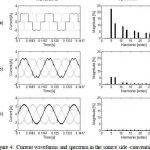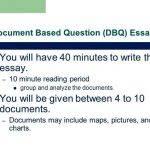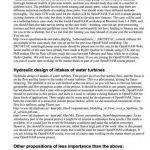by John Fountain
Introduction
Writing a thesis is time consuming and hard work; your supervisor will encourage you to start writing up early in your final year. These notes are intended to help you produce your thesis.
The thesis will, of course, contain your account of the new results you have obtained in your research. It should not, however, be merely a catalogue of these results and their proofs. Your work should be put into context. A clear description of the topics you have worked on and the questions you have tried to answer is essential. You must also show that you are aware of existing work in the subject and so your thesis should contain a review of such work. According to the University you are also supposed to be have a “a good general knowledge of the field of study”. Writing the thesis gives you one opportunity to demonstrate that you do know something more than your own results and their proofs.
It is usually a good idea to write a plan setting out the expected chapters of the thesis and giving a very brief outline of the contents of each chapter. Normally you would discuss your plan with your supervisor and when agreement has been reached, you proceed with the writing.
Your thesis will be produced using LaTeX with which you will be familiar long before you come to writing up.
Structure
Every thesis has an introduction which tells the reader what it is about. It will briefly summarise the problems you have worked on, explain how these problems arose from existing work and perhaps give an overview of the main results of the thesis. An introduction often finishes with a description of the contents of each chapter. Although it comes first, the introduction is usually written last.
The introduction is followed by a chapter giving background information. Remember that the thesis will be read by people who have not been immersed for two years in your research problems. Usually you will give all the basic definitions which are not in standard textbooks and often some which are. It is best to make life easier for the reader by including too much rather than too little.
You will also want to give a review of the state of the art relevant to your thesis. This may be included in the final sections of the chapter on background material or may form a separate chapter.
Next, the bulk of the thesis is taken up with an account of your research. Here you should describe what you are doing, state the results carefully and clearly and write proofs so that they can be followed by a reader who is not an expert on the particular topic. Do not make the readers work too hard. Remember that you are trying to show that you can communicate mathematical ideas as well as demonstrating that you can solve problems. It is impossible to be too clear.
Theses often finish with a short section on future research. This will be a brief account of questions which arise from your results, and directions for further work on the thesis topic.
At the end of the thesis you list the references relevant to your research. Details of how they should be set out are given in the University regulations.
Style
Your thesis must be written in English.

This implies that it must not be in the form of rough notes or contain sequences of unexplained formulae. It must be written in grammatically correct sentences. There are also several points of style which are peculiar to writing mathematics. Here is a list of some of them.
- Do not start a sentence with a symbol.
Bad: x 2 +1 is irreducible over R.
Good: The polynomial x 2 +1 is irreducible over R . - The symbols $\Rightarrow$, $\forall$, $\exists$, etc. should not be used; replace them by appropriate words.
Bad: $\forall m\in N \exists$ primes $p_1,\dots,p_k$ such that $m=p_1\cdots p_k$.
Good: Every natural number can be written as a product of primes. - Be careful not to use the same symbol for two different things. For instance, if a proof starts with “Let $x\in\mathbb$” do not introduce a vector $x$ later in the proof.
- When referring to a result or section which is numbered, use a capital letter. For example. follows by Theorem 1 and in Section 4 we discuss.
- Symbols in different formulae should be separated by words.
Bad: If $x+y=z$, $x\leq y$, then.
Good: If $x+y=z$ where $x\leq y$, then. - Quantifiers should be clear.
Bad: $f(x)=g(x)$ ($x\in X$).
Does this mean “for all $x\in X$” or “for some $x\in X$”?
Good: $f(x)=g(x)$ for all $x\in X$.
Returning to the issue of clarity, when writing a long proof you must think how to structure it so that a reader can follow it. When a proof is longer than a couple of pages, you should explain the strategy of the proof at the beginning. Then make clear when each stage of the proof is complete and what you are going to do next. These points can sometimes be met by giving a series of lemmas and then explaining how the theorem is a consequence of the lemmas. Try to ensure that at all times the reader knows what you are doing, why you are doing it and what you are aiming for.
Revision and proofreading
Once you have written a chapter you should read it with a critical eye and make revisions as appropriate. You will want to ensure that you have made a good job of organizing the material of the chapter and that what you have written makes sense, is correct and reads well. You should also check the spelling and grammar, and correct any typos. To achieve a polished finished product you will have to read the chapter carefully several times. You may also find that when you write Chapter n you will be forced into making changes to some or all of Chapters 1 to n -1. You must be prepared to do this several times.
You are responsible for proofreading your work; your supervisor is not your proofreader. When you print a portion of your thesis you must read the printout and correct mistakes before handing it to your supervisor.
Plagiarism
Plagiarism is defined by the University to be incorporating within your work without appropriate acknowledgement material derived from the work (published or unpublished) of another. Thus, for example, if you are explaining the basics of a topic, you must present it in your own words and not simply copy several sections of a textbook. By writing it yourself, as well as avoiding plagiarism, you demonstrate that you actually understand the material. When you quote results from a paper or a book you should make clear where the result comes from. Similarly, if someone has proved but not published a result you need, then you should acknowledge this fact when you use the result.
References
Two excellent books which enlarge on the above are
- S G Krantz, A Primer of Mathematical Writing. Providence, RI: American Mathematical Socirty, 1997 (S 0.149 KRA)
and - N J Higham, Handbook of Writing for the Mathematical Sciences. Philadelphia, PA: SIAM (Society for Industrial and Appled Mathematics), 1993 (S 0.149 HIG).
The main purpose of both books is to give advice on writing a mathematical paper. However, several chapters in each book are relevant to writing a thesis. You are urged to consult them both and to consider buying one or both. If English is not your first language, you may find Chapter 5 of Higham’s book especially helpful.
Edited 10 Sep 2009 – 14:59 by admin





 Active power filter thesis writing
Active power filter thesis writing Social media topics for thesis writing
Social media topics for thesis writing Questioned document examination thesis writing
Questioned document examination thesis writing Sports complex architectural thesis proposals
Sports complex architectural thesis proposals Writing a scientific masters thesis papers
Writing a scientific masters thesis papers






